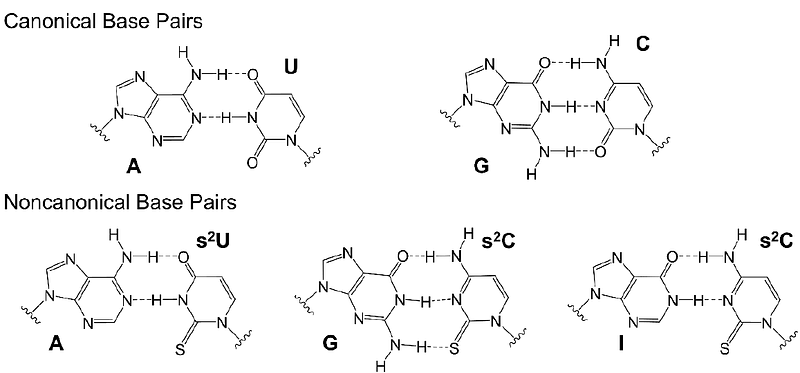Nonenzymatic RNA copying with a potentially primordial genetic alphabet

Nonenzymatic RNA copying with a potentially primordial genetic alphabet
Fang, Z.; Jia, X.; Xing, Y.; Szostak, J. W.
AbstractNonenzymatic RNA copying is thought to have been responsible for the replication of genetic information during the origin of life. However, chemical copying with the canonical nucleotides (A, U, G, and C) strongly favors the incorporation of G and C and disfavors the incorporation of A and especially U, because of the stronger G:C vs. A:U base pair, and the weaker stacking interactions of U. Recent advances in prebiotic chemistry suggest that the 2-thiopyrimidines were precursors to the canonical pyrimidines, raising the possibility that they may have played an important early role in RNA copying chemistry. Furthermore, 2-thiouridine (s2U) and inosine (I) form by deamination of 2-thiocytidine (s2C) and A respectively. We used thermodynamic and crystallographic analyses to compare the I:s2C and A:s2U base pairs. We find that the I:s2C base pair is isomorphic and isoenergetic with the A:s2U base pair. The I:s2C base pair is weaker than a canonical G:C base pair, while the A:s2U base pair is stronger than the canonical A:U base pair, so that a genetic alphabet consisting of s2U, s2C, I and A generates RNA duplexes with uniform base pairing energies. Consistent with these results, kinetic analysis of nonenzymatic template-directed primer extension reactions reveals that s2C and s2U substrates bind similarly to I and A in the template, and vice versa. Our work supports the plausibility of a potentially primordial genetic alphabet consisting of s2U, s2C, I and A, and offers a potential solution to the long-standing problem of biased nucleotide incorporation during nonenzymatic template copying.